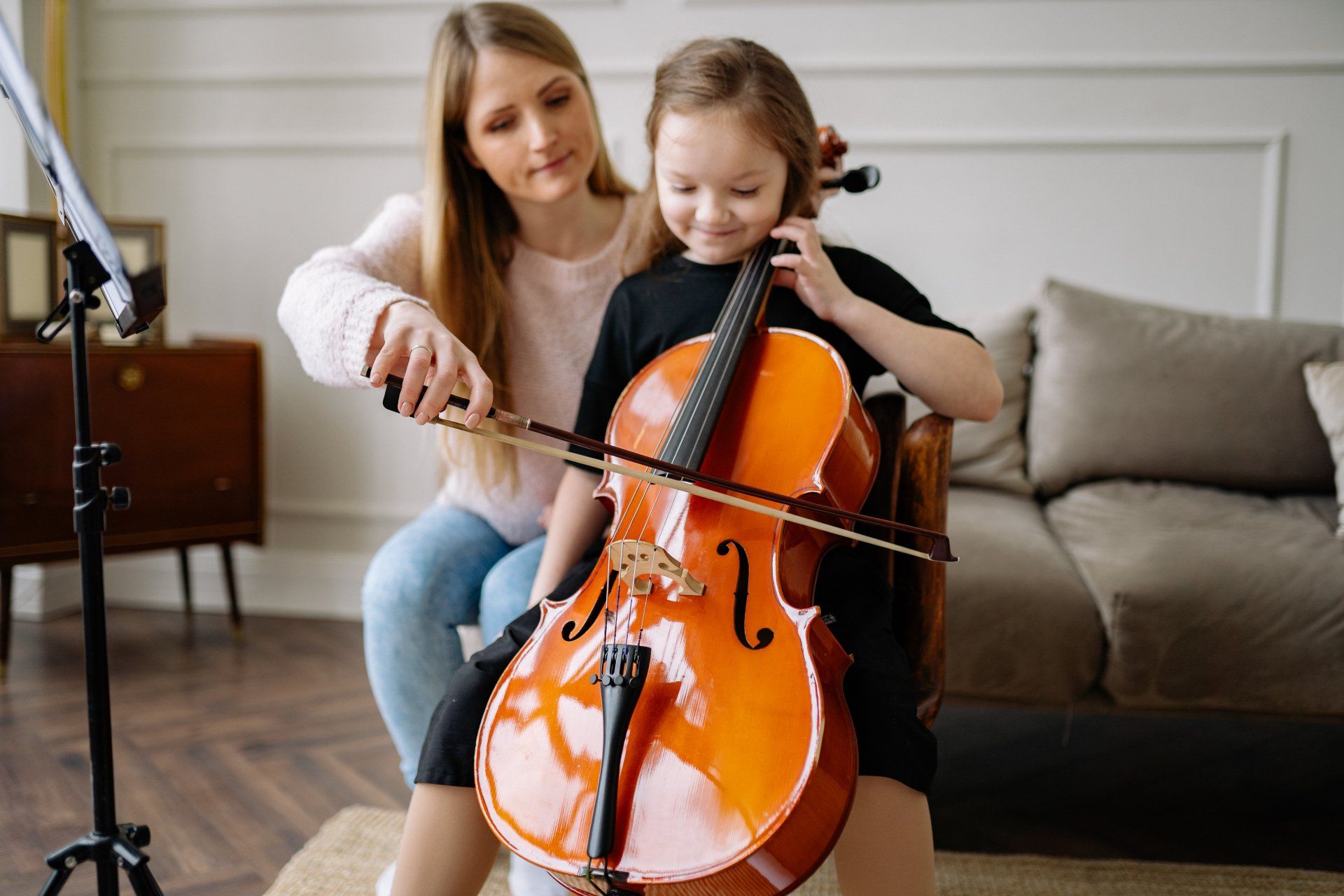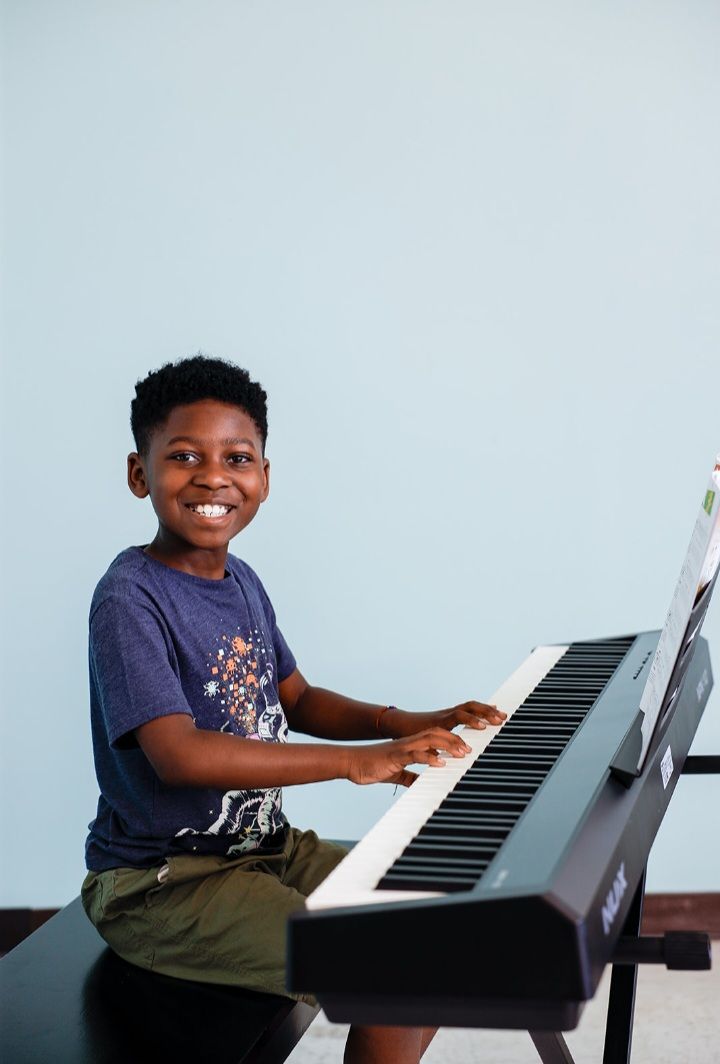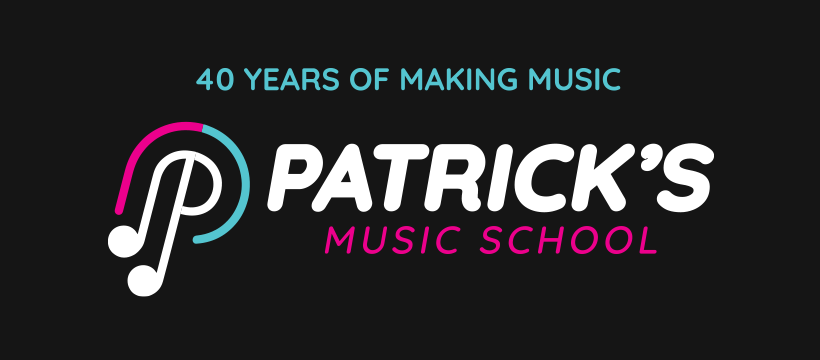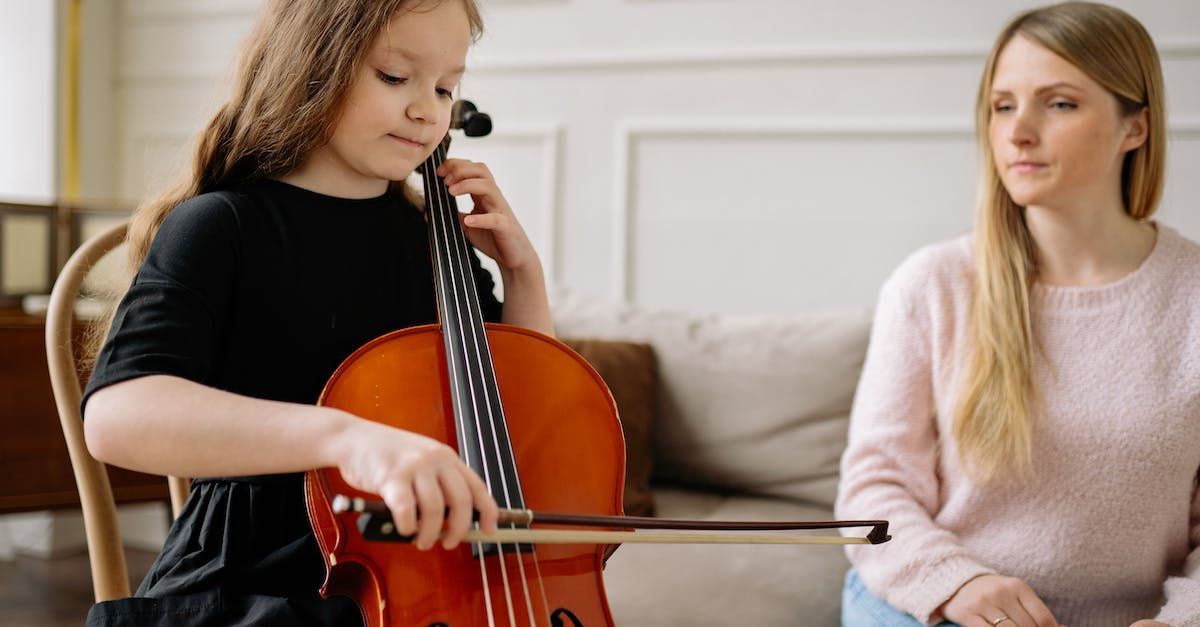The Role of Parents in Private Music lessons
Music education is crucial for children's development, offering benefits beyond learning to play an instrument. Private music lessons provide personalized instruction, tailored curriculum, and opportunities for building self-confidence and discipline.
Parents are essential in supporting their child's musical journey, from finding the right teacher to managing challenges like frustration and performance anxiety.
This article discusses the importance of music education, the advantages of private music lessons, and how parents can support and help their child overcome obstacles in their musical journey.
The Importance of Music Education for Children
Music education plays a crucial role in the development of children, nurturing their creativity, cognitive abilities, and emotional intelligence.
Music education offers an array of benefits that go beyond just learning how to play an instrument. It allows children to express themselves in a unique way, fostering their imagination and problem-solving skills. Engaging with music from a young age has been linked to improvements in academic performance and language development. Through exploring different genres and styles, children can broaden their horizons and develop a deeper appreciation for the arts.
The Benefits of Private Music Lessons
Private music lessons offer personalized instruction, tailored curriculum, and individualized attention to enhance a student's musical journey.Through one-on-one sessions with a skilled instructor, students receive undivided attention that caters to their specific learning style and pace. This focused approach allows for the customization of lessons to meet the unique needs and goals of each individual.
The curriculum in private music lessons can be tailored to suit the student's interests, skill level, and objectives. Whether one aims to master classical compositions or delve into jazz improvisation, the flexibility of private lessons enables a more personalized and targeted learning experience.
Individualized Instruction
Individualized instruction in music lessons tailors the learning experience to the student's pace, preferences, and learning style, fostering a deeper musical connection.
This personalized approach allows students to progress at a comfortable speed, ensuring they fully grasp each concept before moving on to more advanced techniques. By catering to the individual's unique interests and strengths, the instructor can design lessons that are engaging and motivating, keeping the student inspired to learn and practice regularly. Through this tailored guidance, students develop a sense of ownership over their musical journey, boosting their confidence and self-expression.
Tailored Curriculum
A tailored curriculum in music lessons adapts to the student's abilities, interests, and goals, creating a customized learning path for optimal growth and development.
By tailoring the curriculum to each student, music teachers can address individual strengths and weaknesses, fostering a deeper understanding of musical concepts. This approach allows students to progress at their own pace, ensuring they feel challenged yet not overwhelmed. Setting personalized learning goals helps students stay motivated and engaged, ultimately leading to greater skill development. A customized curriculum encourages musical exploration, enabling students to discover genres and techniques that resonate with them, fostering a lifelong love for music.
Building Self-Confidence
Music lessons play a vital role in building self-confidence, enableing students to express themselves creatively, overcome challenges, and showcase their musical talents with assurance.
When individuals engage in music lessons, they have the opportunity to cultivate a sense of accomplishment as they work diligently to master new skills and techniques. This sense of mastery not only enhances their musical abilities but also translates into increased self-assurance in other aspects of their life.
Through consistent practice and guidance from instructors, students develop the confidence to perform in front of others, helping them overcome stage fright and fear of judgment. Performing in recitals or concerts gives students a platform to exhibit their progress and receive positive reinforcement, further boosting their self-esteem.
Developing Discipline and Time Management Skills
Music lessons instill discipline and time management skills in students, requiring consistent practice, focus, and dedication to progress and excel in their musical pursuits.Establishing a regular practice routine is crucial to honing musical skills and achieving milestones.
Setting short-term and long-term goals helps students stay motivated and focused on their progression.
Through perseverance and commitment to their craft, students learn the value of hard work and dedication.
Encouraging Creativity and Self-Expression
Music lessons encourage creativity and self-expression, providing a platform for students to explore musical genres, experiment with compositions, and convey emotions through their performances.
Through learning different musical techniques and styles, students can develop a unique voice in their playing or singing. The process of musical exploration not only broadens their understanding of music but also sparks new ideas and inspires innovative approaches to interpreting songs.
When students engage in composing music, they tap into their inner thoughts and feelings, turning abstract emotions into tangible melodies. This composition opportunities foster a sense of ownership over their music and allows for personal expression in a structured yet boundless form.
How Parents Can Support Their Child's Music Education
Parents play a pivotal role in supporting their child's music education journey by finding a qualified music teacher, establishing a practice schedule, and actively participating in their musical progress.In terms of finding a suitable teacher, parents should consider factors like qualifications, teaching style, and rapport with their child. It's essential to choose someone who not only has the expertise but also can connect with the young musician.
Scheduling regular practice sessions is vital to cultivate discipline and improvement. By setting aside dedicated time each day for practice, children can enhance their skills consistently.
Attending lessons and recitals demonstrates to the child the value parents place on their musical development. It fosters a sense of pride and motivation, showing that their efforts are appreciated and encouraged.
Observing their progress firsthand during lessons allows parents to provide constructive feedback and encouragement, which is crucial for maintaining enthusiasm and commitment.
Finding a Qualified Music Teacher
Finding a qualified music teacher is essential for parents to ensure their child receives expert guidance, structured lesson plans, and a supportive learning environment conducive to musical growth.Expertise and experience play a crucial role in a music teacher's ability to nurture a student's talent effectively. Teachers with a deep understanding of music theory, instrument technique, and various musical genres can offer comprehensive instruction tailored to the student's needs.
Quality teaching methods are another key aspect to consider. A skilled music teacher should be able to adapt their teaching style to suit the individual learning preferences and pace of each student, making learning enjoyable and engaging.
Mentorship qualities such as patience, encouragement, and a genuine passion for teaching are essential for fostering a positive and inspiring learning environment that motivates students to progress and excel in their musical journey.
Creating a Practice Schedule
Establishing a practice schedule for music lessons helps parents and children maintain consistency, focus, and progress in mastering musical skills and repertoire.
A structured practice routine provides a clear framework for daily or weekly music practice, ensuring that each session is purposeful and productive. By following a set schedule, students can gradually build their abilities, whether it's mastering scales, perfecting challenging pieces, or improving technique. This sense of routine helps develop discipline and perseverance, essential qualities for long-term musical growth. Having set goals within the practice schedule allows students to track their progress and celebrate achievements along the way. Parental involvement in monitoring and supporting the practice schedule can further motivate young musicians to stay committed and enthusiastic about their musical journey.
Attending Lessons and Performances
Parents attending music lessons and performances demonstrate active support and encouragement, fostering a sense of pride, motivation, and connection in their child's musical journey.Being present during these musical activities shows your child that you value their efforts and progress. This presence creates a bonding experience and strengthens the parent-child relationship through shared moments of joy and accomplishment.
Parental involvement can greatly impact a child's confidence and willingness to explore their musical talents further.Providing Encouragement and Motivation
Parents play a vital role in providing encouragement and motivation to their child during music education, fostering a positive mindset, resilience, and passion for learning.By offering positive reinforcement when their child hits a high note or masters a difficult piece, parents can boost their confidence levels and inspire them to strive for excellence. Setting achievable goals, whether it's mastering a new technique or preparing for a recital, can give children a sense of purpose and direction in their musical journey.
Parents who provide continuous support by attending their child's performances, praising their progress, and showing genuine interest in their musical development, create a nurturing environment where the child feels valued and motivated to keep exploring their musical talents.
Exposing Children to Different Types of Music
Introducing children to a diverse range of musical genres and styles broadens their musical horizons, inspires creativity, and cultivates a deeper appreciation for the art of music.It's fascinating how music can serve as a powerful tool not only for entertainment but also for education and personal growth. By exposing kids to various music genres, from classical to jazz, hip-hop to folk, parents provide them with a lens into different cultures and traditions. This exposure enhances their cultural awareness and fosters empathy and understanding towards others. When children are exposed to a variety of musical styles, it sparks their creativity by encouraging them to explore different sounds and rhythms.
The Role of Parents in Overcoming Challenges in Private Music Lessons
Parents play a crucial role in helping children overcome challenges in private music lessons by addressing frustration, managing time commitments, handling performance anxiety, and maintaining open communication with the music teacher.Dealing with setbacks in music education can be tough for children, and parental support is key in such situations. Encouraging perseverance and providing a safe space for children to express their frustrations can help them navigate obstacles. By fostering a supportive environment at home, parents can enable their children to develop resilience and determination. Setting realistic goals and celebrating small achievements can boost a child's confidence and motivation to continue learning and growing in their musical journey.
Dealing with Frustration and Setbacks
Parents can help children navigate frustration and setbacks in private music lessons by offering encouragement, problem-solving strategies, and emotional support to build resilience and determination.Encouraging positive reinforcement can play a crucial role in helping children overcome challenges they face during music lessons. By acknowledging their efforts and progress, parents can boost their confidence and motivation.
Another way parents can assist is by teaching children problem-solving techniques. By guiding them to break down complex tasks into smaller steps or brainstorming different approaches, children can learn how to tackle obstacles effectively.
Parents can provide a safe space for children to express their emotions and frustrations. Listening empathetically and validating their feelings can help children process their emotions and build emotional resilience.
Balancing Music Lessons with Other Activities
Balancing music lessons with other activities requires parental guidance in structuring schedules, prioritizing commitments, and fostering a harmonious blend of musical and non-musical pursuits for the child's overall well-being.
Ensuring that a child's daily routine incorporates both musical learning and diverse experiences is key to their development. By diversifying their activities , parents can help them cultivate a well-rounded skill set and discover where their true passions lie. It's about striking that perfect balance, where music enhances their creativity and discipline, while also leaving ample room for social interactions, physical activities, and academic pursuits.
Managing Performance Anxiety
Parents can support children in managing performance anxiety during music lessons by offering relaxation techniques, positive reinforcement, and creating a supportive environment that fosters confidence and self-assurance.One effective way parents can help their children is by introducing deep breathing exercises to alleviate nervousness before a recital or performance. Encouraging the child to practice slow and controlled breathing can significantly reduce stress levels.
In addition, parents can engage in regular conversations with their child about the importance of effort and improvement rather than focusing solely on outcomes. This shift in perspective promotes a mindset of growth and learning rather than fear of failure.
Communicating with the Music Teacher
Effective communication between parents and the music teacher is essential for understanding the child's progress, addressing concerns, and fostering a collaborative partnership in supporting the student's musical development.When parents are actively engaged in their child's musical education , they can gain valuable insights into their child's strengths, areas for improvement, and overall development. Through regular feedback exchanges between parents and the music teacher, parents can stay informed about their child's learning journey, celebrate achievements, and address any challenges that may arise.
Progress monitoring becomes more effective as parents and the music teacher work together to set goals, track milestones, and adjust strategies based on the child's progress. This collaborative approach not only enhances the student's musical skills but also strengthens the relationship between parents, the music teacher, and the child.













